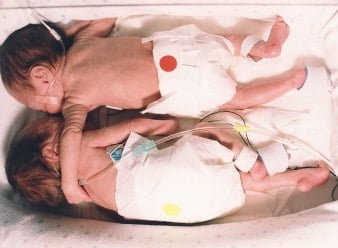
Relying too much on data without considering the human factor can be one of the most dangerous things a business can do. The examples of Nokia, Airbus, and American Airlines show that, writes columnist Simone van Neerven. ‘More data does not necessarily lead to more insight.’
Nokia over-relied on data
Everybody knows that Nokia missed the boat with the mobile phone. Less well-known is the story behind it. In 2009, when Nokia was emerging as the world’s largest mobile phone company, ethnographer Tricia Wang made an important discovery. Hired by the company, she had spent years doing ethnographic work in China, from living with migrants to working as a street vendor and hanging out in internet cafes for months. She found that people with a low income were willing to pay for more expensive smartphones, even if it meant spending over half of their monthly income to get one.
So Wang saw a huge untapped market. Nokia had already launched a smartphone, but it was expensive and complex, and therefore only used by a select audience. She advised Nokia to change its current product development strategy from making expensive smartphones for elite users to smartphones that would be affordable for everyone. Nokia did not know what to do with these findings. They believed a sample size of a hundred was too weak and small compared to their sample size of several million data points. In addition, they said that there weren’t any signs that backed her insights in their existing datasets and disregarded Wang’s advice.
How Airbus' largest commercial plane A380 flopped
In the 1990s, Airbus was faced with the question of how air travel would develop in the coming decades. One thing was certain: air travel would continue to grow at a massive rate over the next 20-30 years. Studies showed that the growth would be so rapid that capacity at airports and in the air could well become the limiting factor. Airbus concluded that a larger aircraft would be needed. They developed the A380, the largest passenger aircraft in the world, measuring 73 meters in length with a wingspan of almost 80 meters.
In 2007, the first commercial A380 flight took place. Airbus expected to sell well over a thousand planes in the first 20 years. But ten years later, the orders dried up after only 250 planes had been sold. The production was stopped with a total loss of about 25 billion euros.
Airbus had well predicted the enormous growth of the market. However, they overlooked the fact that budget airlines were on the rise and accounted for most of the market growth. To save costs, these airlines often fly to secondary airports. But these airports are far too small to handle such a large aircraft as the A380. Furthermore, contrary to expectations, customers were more than happy to go to these more distant airports as the price of their flight tickets was significantly lower. Airbus had completely missed this – then still weak – signal.
Human dynamics are hard to capture in data
Using ‘Big Data’ can be incredibly valuable to an organization. But more data does not necessarily lead to more insights. There is a danger in relying solely on data. People can become completely obsessed with numbers that they are not open to weaker, crucial insights. Relying too much on data without considering human dynamics can be one of the most dangerous things a business can do. Nokia and Airbus are examples of that.
Don't always listen to what customers say
At the same time, often people don’t know what they want. They say they will do or buy something, but in practice, they do the exact opposite. In the late 1990s, a customer survey conducted by American Airlines showed that passengers were willing to pay more for extra legroom. Based on that insight, American Airlines began retrofitting all their aircraft in 2000, removing two rows of seats from their airplanes. Planes were taken out of service for a short while and huge budgets were spent on marketing to promote the new product. This whole operation took months and they spent 70 million dollars in total.
But American Airlines soon learned that despite consumers’ enthusiasm for the idea of more legroom when they fly, in reality, the vast majority didn’t pay those extra dollars. And so, four years later, they spent more money putting all the seats back.
Spotting weak signals and emerging trends
Customer feedback can be very valuable in discovering friction in an organization’s service or process. But it does not turn out to be a good indicator at all for innovation or creating something new. It’s like Henry Ford said, “If I’d asked my customers what they wanted, they’d have said a faster horse.”
It is important to realize that human dynamics drive trends, which is difficult to capture in data. Emerging trends can be noticed much earlier with keen observation. It will lead to unexpected, surprising insights that may contradict what you have always believed and undermine what you have always been so sure of.
The key is to be open-minded, to let go of your assumptions, and to dare to make choices that are not (yet) supported by the data.
This article was originally published in Dutch on MT/Sprout, the most popular business and management platform in the Netherlands.
don’t miss out!
get my columns straight into your mailbox:


